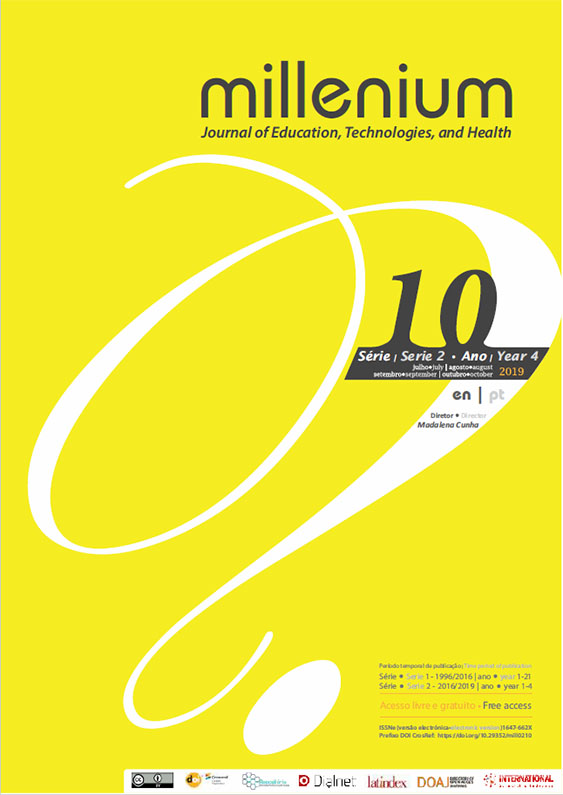Early postural adjustments in football players with cerebral palsy
DOI:
https://doi.org/10.29352/mill0210.01.00241Keywords:
Cerebral Palsy, Early Postural Adjustments, Postural Control, FootballAbstract
Introduction: The functional limitations associated with Cerebral Palsy (CP) and inactivity are directly related to the deficit in postural control, namely the Early Postural Adjustments (EPAs). On the other hand, same studies showed that the practice of physical exercise can improve stability.
Objectives: Thus, the goal of the present study was to evaluate the influence of physical exercise, in this case in a football player, on the EPAs of athletes with CP.
Methods: The study included 5 young male adults with CP, aged between 18 and 36 years old, all football players, class 7 and 8.
The electromyographic activity was recorded using Delsys Trigno and the ratio of the postural musculature [soleus (SO) and tibialis anterior (TA)] prior to a step motion, as well as the center of pressure displacement amplitude were calculated through the force platforms (Bertec), before and after a 4 month interval of training. The two moments of evaluation were compared using the Wilcoxon test and the Spearman correlation between the CoP amplitude and the muscular activity ratio was calculated.
Participants were recruited in a first period in which they had no physical activity at all and in the following 4 months they started training regularly, with a frequency of three times a week for 1h30min, always with the same trainer and in the same physical training space.
Results: There was a statistically significant decrease in the anterior CoP amplitude (-4.47cm; p=0.043) after 4 months, with a negative correlation between this amplitude and the ratio of TA / SO (r=-0.90; p=0.037). In the lateral direction, a diminution of amplitude of minimum CoP (-1.49; p=0.893) without statistically significant correlation (r=0.10; p=0.873) was found.
Conclusions: Practicing sport, even in pathology, has a significant effect on the improvement of postural oscillation, with an increase in the relationship between muscular activity and postural control.
Downloads
References
Beckung, E., et al. (1997). "Motor and sensory dysfunctions in children with mental retardation and epilepsy." Seizure 6(1): 43-50.
Colver, A., et al. (2014). "Cerebral palsy." Seminar 383: 1240–1249.
Correia, P. P., et al. (1993). Electromiografia: Fundamentação Fisiológica, Métodos de Recolha e Processamento, Aplicações Cinesiológicas, Lisboa: Edições FMH.
CPISRA (2014). "Rules & Regulations for CPISRA Sanctioned Tournaments and Amendments to the FIFA Laws of the Game." CPISRA 7-a-side Football Rules & Regulation n.d.
Keawutan, P., et al. (2014). "Systematic review of the relationship between habitual physical activity and motor capacity in children with cerebral palsy." Research in Developmental Disabilities 35(6): 1301-1309.
Lamontagne, A., Malouin, F., Richards, C. L., & Dumas, F. (2002). Mechanisms of disturbed motor control in ankle weakness during gait after stroke. Gait and Posture, 15(3), 244-255.
Mazzaro, N., Nielsen, J. F., Grey, M. J., & Sinkjaer, T. (2007). Decreased Contribution From Afferent Feedback to the Soleus Muscle During Walking in Patients With Spastic Stroke. Journal of Stroke and Cerebrovascular Diseases, 16(4), 135-144.
Mille, M.-L., et al. (2005). "Age-dependent differences in lateral balance recovery through protective stepping." Clinical Biomechanics 20: 607-616.
Pavone, V., et al. (2016). "Botulinum Toxin Treatment for Limb Spasticity in Childhood Cerebral Palsy." Frontiers in Phamacology 7(29): 1-6.
Silva, A., et al. (2012). "Ankle Dynamic in Stroke Patients: Agonist vs. Antagonist Muscle Relations." Somatosens Mot Res. 29(4): 111-116.
Sterzing, T., et al. (2016). "In-shoe plantar pressure distribution and lower extremity muscle activity patterns of backward compared to forward running on a treadmill." Gait and Posture 46: 135-141.
Tokuno, C. D., & Eng, J. J. (2006). Gait initiation is dependent on the function of the paretic trailing limb in individuals with stroke. Gait Posture, 24(4), 424-428.
Vuillermea, N., et al. (2002). "Postural sway under muscle vibration and muscle fatigue in humans." Neuroscience Letters 333: 131-135.
Downloads
Published
How to Cite
Issue
Section
License
Authors who submit proposals for this journal agree to the following terms:
a) Articles are published under the Licença Creative Commons (CC BY 4.0), in full open-access, without any cost or fees of any kind to the author or the reader;
b) The authors retain copyright and grant the journal right of first publication, allowing the free sharing of work, provided it is correctly attributed the authorship and initial publication in this journal;
c) The authors are permitted to take on additional contracts separately for non-exclusive distribution of the version of the work published in this journal (eg, post it to an institutional repository or as a book), with an acknowledgment of its initial publication in this journal;
d) Authors are permitted and encouraged to publish and distribute their work online (eg, in institutional repositories or on their website) as it can lead to productive exchanges, as well as increase the impact and citation of published work
Documents required for submission
Article template (Editable format)





